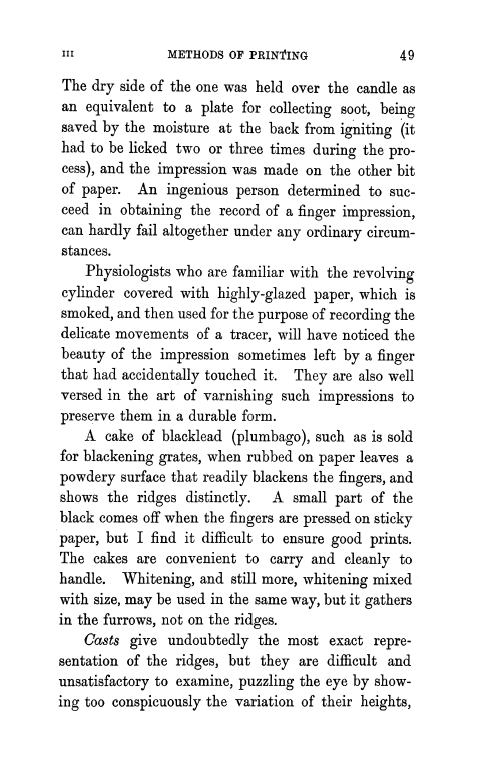| ||||||

OCR Rendition - approximate
III METHODS OF PRINTING 49 The dry side of the one was held over the candle as an equivalent to a plate for collecting soot, being saved by the moisture at the back from igniting (it had to be licked two or three times during the process), and the impression was made on the other bit of paper. An ingenious person determined to succeed in obtaining the record of a finger impression, can hardly fail altogether under any ordinary circumstances. Physiologists who are familiar with the revolving cylinder covered with highly-glazed paper, which is smoked, and then used for the purpose of recording the delicate movements of a tracer, will have noticed the beauty of the impression sometimes left by a finger that had accidentally touched it. They are also well versed in the art of varnishing such impressions to preserve them in a durable form. A cake of blacklead (plumbago), such as is sold for blackening grates, when rubbed on paper leaves a powdery surface that readily blackens the fingers, and shows the ridges distinctly. A small part of the black comes off when the fingers are pressed on sticky paper, but I find it difficult to ensure good prints. The cakes are convenient to carry and cleanly to handle. Whitening, and still more, whitening mixed with size, may be used in the same way, but it gathers in the furrows, not on the ridges. Casts give undoubtedly the most exact representation of the ridges, but they are difficult and unsatisfactory to examine, puzzling the eye by showing too conspicuously the variation of their heights,
|